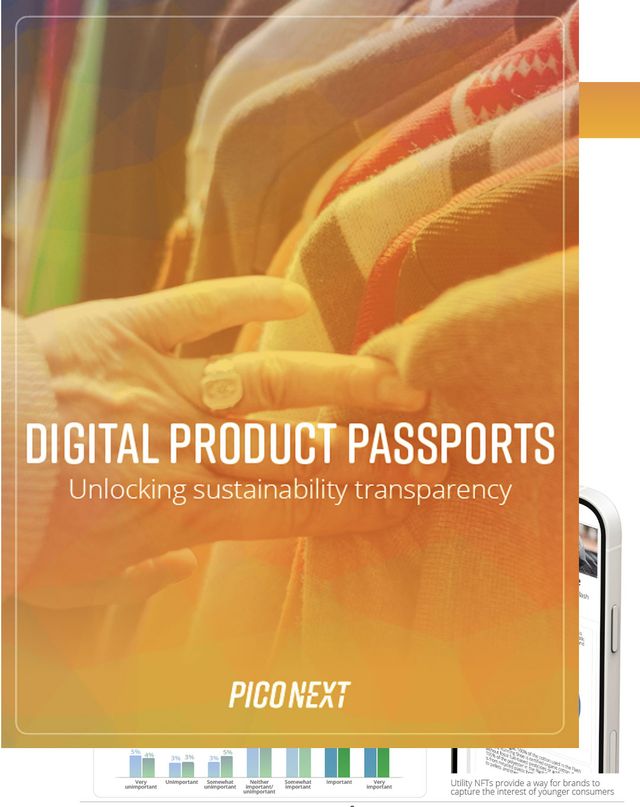The fashion industry is evolving, with growing consumer demand for transparency regarding the environmental and social impacts of purchases. Digital Product Passports (DPPs) are poised to transform how brands share this vital information. By 2025, the adoption of DPP technology will reach a key juncture, leading to significant advancements for brands, consumers, and the broader industry landscape.
DPPs provide comprehensive information about a product's lifecycle, from raw materials to end-of-life disposal. They are vital for enhancing sustainability, traceability, and consumer trust. As brands prepare for these changes, 2025 will serve as a pivotal year for the growing influence of DPPs in the apparel and fashion industry. This article explores the regulatory landscape, technological challenges, strategies brands can adopt, and the implications for consumers.
The Regulatory Landscape in 2025
In 2025 and beyond, the European Union (EU) is expected to formally introduce Digital Product Passport regulations. The French AGEC law, which started with larger companies in 2023, offers a glimpse into this future. The AGEC law's phased implementation emphasizes larger brands first, setting an example for others to follow in subsequent years. It's anticipated that smaller businesses will receive mandates requiring compliant DPPs in the years following the initial rollout.
The EU initiative is poised to set a precedent for supply chain transparency. While focused on European markets, its influence could ripple across other regions, prompting similar regulations that align with the EU’s commitments to sustainability and circular economy principles. However, potential inconsistencies in regulations across different jurisdictions could complicate matters for brands operating globally, requiring them to navigate varying standards.
Brands will need to monitor these regulatory developments closely. Proactively adapting to DPP guidelines not only enhances compliance but also strengthens their market positions. Those that act swiftly and strategically could gain a competitive edge in an increasingly sustainability-conscious climate.
Technological Adoption and Challenges
For effective Digital Product Passport implementation, brands will need to adopt various technologies for data capture and management. Systems such as Product Lifecycle Management (PLM), Enterprise Resource Planning (ERP), and supply chain traceability software will play pivotal roles in managing DPP data efficiently. Integration between existing solutions and new DPP technologies is essential for achieving seamless data workflows across companies.
One critical aspect of DPP success lies in data standardization. To facilitate effective communication between different systems and stakeholders, establishing standardized data formats and protocols is paramount. Currently, efforts are underway to create these standards, which will likely evolve as technology and industry needs change.
Security and privacy are also major hurdles brands must navigate. As DPPs contain sensitive information, ensuring the secure handling of this data will be crucial for consumer trust. Developing robust data security measures, adhering to regulations like GDPR, and implementing best practices for data management can help protect both brand information and consumer privacy.
Cost poses its own challenge. Implementing DPP systems can demand significant financial resources, particularly for smaller businesses. Identifying alternative funding sources and structured support mechanisms can alleviate some of this financial burden and enable these brands to join the sustainability movement.
Consumer Engagement and Brand Strategies
DPPs present brands with a unique opportunity to build consumer trust and enhance their reputations. By transparently sharing sustainability credentials and product life cycle details, fashion brands can demonstrate their commitment to responsible practices. This transparency can strengthen relationships with consumers, who are increasingly demanding more information about their purchases.
To effectively communicate DPP information, brands should incorporate it into their marketing strategies. E-commerce platforms, product labeling, and promotional materials are all ideal channels for sharing data. Engaging visuals like infographics can help break down complex information and make it more accessible to consumers.
Brands can also differentiate themselves in a crowded market by showcasing their sustainability efforts through DPPs. Highlighting innovative practices and transparent supply chains will resonate with environmentally conscious consumers who prioritise such values when shopping. As consumers respond favourably to these initiatives, brands can expect increases in loyalty and sales.
Understanding consumer behavior regarding DPP initiatives is essential. Many consumers express a willingness to pay more for sustainable products and prioritize brands that are committed to transparency. By tapping into these sentiments, brands can build strong communities around their DPP initiatives and foster greater brand loyalty.
The Future of Digital Product Passports Beyond 2025
As brands implement Digital Product Passports, the scope of the data included is likely to expand beyond environmental information. Incorporating social and ethical aspects of production will enhance the value of DPPs as consumers seek a holistic view of products. This broader understanding will allow brands to resonate with consumers' desires for responsible consumption.
Technological advancements will further impact the future of DPPs. Innovations in data management, artificial intelligence-driven analytics, and blockchain technology will bolster data security and transparency. The integration of these technologies will enhance the accuracy and reliability of DPPs while ensuring that brands maintain consumer trust.
Looking ahead, a long-term objective will be global harmonization of DPP standards and regulations. As countries observe the positive impacts of the EU's initiative, the hope is to see similar regulations adopted worldwide. Such harmonization can simplify compliance for multinational brands, ultimately benefiting consumers through greater accessibility to transparent, verified information.
Outlook for 2025 and beyond
The outlook for Digital Product Passports in the apparel and fashion industry by 2025 reflects a significant shift. With the EU's regulatory framework set to influence global markets, brands need to embrace these changes to remain competitive. Enhanced sustainability, increased transparency, and improved consumer engagement will be central to navigating this transformation.
It's time for brands to start exploring DPP solutions and prepare for upcoming regulatory changes. The adoption of DPPs has the potential to transform the apparel industry, significantly contributing to global sustainability efforts. As brands adapt, they will not only meet regulatory expectations but also cater to a market increasingly focused on ethical consumption.
Learn more
For more information, watch a demo of PicoNext or request a consultation.


